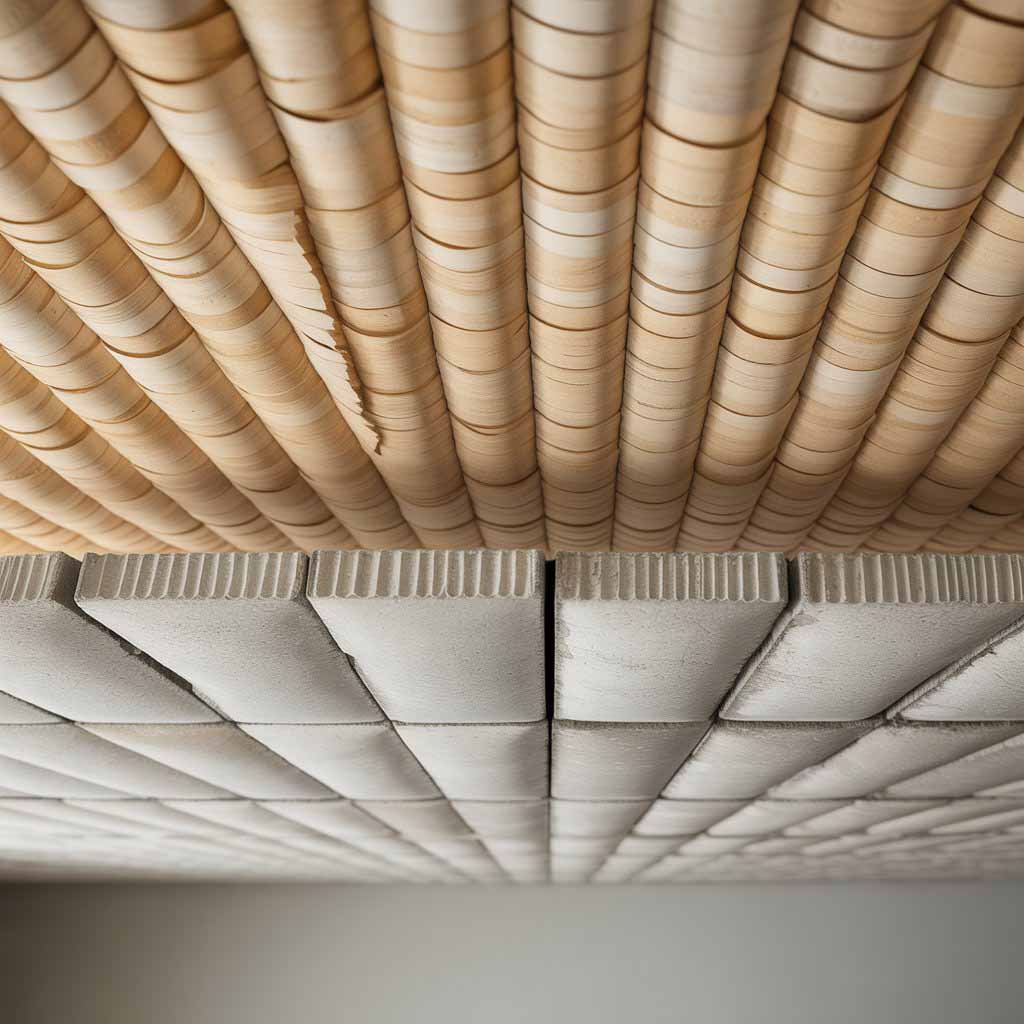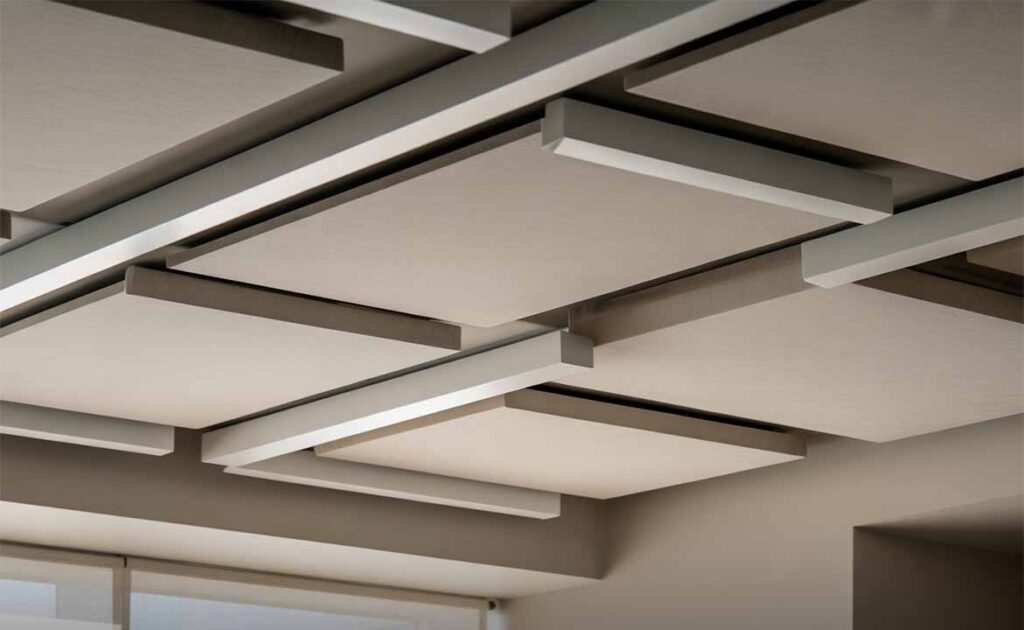Asbestos drop ceiling tiles were once a popular choice in American homes, offices, and schools because they were affordable, durable, and fire-resistant. However, these same tiles have become a serious health concern today. Many properties built before the 1990s may still contain them, making it vital to understand the risks. Disturbing old ceiling tiles can release harmful fibers into the air, which are dangerous to breathe. Learning how to identify, test, and handle asbestos ceiling tile examples safely is crucial for protecting your family. Whether you’re renovating or inspecting an old home, recognizing asbestos drop ceiling tiles pictures can help prevent exposure and ensure a safe living space.
Understanding Asbestos Drop Ceiling Tiles
Many older homes and schools in the U.S. still contain asbestos drop ceiling tiles. These tiles were common between the 1950s and 1980s because asbestos made them durable and fire-resistant. Builders loved the material for its strength and low cost. Sadly, people didn’t know how dangerous it was back then.
If you look closely at asbestos ceiling tile examples, they often have a soft, chalky texture and a light gray or off-white color. You might see them in basements, offices, or old schools. Some people even share asbestos drop ceiling tiles pictures or asbestos drop ceiling tiles Reddit discussions to compare what they have at home. Always remember, looks can be deceiving only lab testing confirms the presence of asbestos.
| Year Range | Common Use | Risk Level | Action |
|---|---|---|---|
| 1950–1980 | Widespread in homes | Very High | Professional testing |
| 1980–1990 | Limited use | Moderate | Inspect before renovation |
| After 1990 | Rare | Low | Use modern alternatives |
Health Risks Linked to Asbestos Ceiling Tiles
Breathing in asbestos fibers can cause serious lung problems. When asbestos drop ceiling tiles are disturbed, they release tiny fibers into the air. These fibers can stay in your lungs for years. Over time, they may lead to mesothelioma, asbestosis, or even lung cancer. That’s why asbestos drop ceiling tiles dangerous is not just a phrase it’s a real health warning.

Doctors often say there’s no safe level of exposure. Once fibers are airborne, you can’t see or smell them. This is why the Environmental Protection Agency warns against handling or cleaning these tiles yourself without proper safety measures and professional guidance.
Real-Life Example: Hidden Dangers in Old Homes
In 2022, a family in Ohio began remodeling their basement. While removing old tiles, they noticed dust falling from above. A quick online search for photos of asbestos ceiling tiles made them suspicious. After testing, the results confirmed asbestos. They had unknowingly spread harmful fibers throughout their home. It cost them thousands in cleanup and professional abatement.
How to Identify Asbestos Drop Ceiling Tiles Safely
The safest way to identify asbestos is by hiring a licensed asbestos inspector. However, you can do a visual check first without touching the tiles. Homes built before 1990 are more likely to contain asbestos. Compare cellulose vs asbestos ceiling tiles pictures online to get an idea of what you’re dealing with. Cellulose tiles usually look softer and fibrous, while asbestos ones seem denser with a fine, gritty surface.
If tiles crumble when touched or release dust, stop immediately. Avoid cleaning, drilling, or painting over them. A professional can collect small samples for lab testing. They’ll wear protective gear and use airtight containers to avoid spreading fibers. Only then can you be sure whether your ceiling tiles contain asbestos.

What to Do If You Suspect Asbestos in Your Ceiling
If you think your home has asbestos drop ceiling tiles, don’t panic—but don’t disturb them either. The key is to avoid breaking or scraping the tiles. If the tiles are intact and in good shape, leave them alone until a professional inspects them. Covering them with plastic sheeting or sealing the area can reduce exposure risks temporarily.
Next, call a certified asbestos abatement contractor. They’ll assess whether removal is necessary or if sealing the material (encapsulation) is safer. The EPA and most states maintain lists of licensed experts you can contact. Always check for credentials and insurance before hiring. Knowing what to do if you have asbestos ceiling tiles can save you both health problems and costly mistakes.
Costs of Asbestos Tile Removal in the U.S.
Removing asbestos ceiling tiles can be expensive, but it’s worth every dollar for your safety. On average, testing costs between $250 and $500, while full removal ranges from $1,200 to $3,000 depending on your ceiling size. Encapsulation (sealing) is cheaper, averaging $2 to $6 per square foot.
| Service Type | Average Cost (USD) | Best Option When |
|---|---|---|
| Testing | $250–$500 | Before any renovation |
| Encapsulation | $2–$6/sq ft | Tiles are stable |
| Removal | $1,200–$3,000+ | Tiles are damaged or deteriorating |
Always compare multiple quotes before deciding. A trustworthy contractor should explain how they’ll contain dust and dispose of waste safely.
Modern Alternatives to Asbestos Drop Ceiling Tiles
Today, homeowners have many safe, stylish alternatives to asbestos. Materials like fiberglass, PVC, or mineral fiber are common and completely asbestos-free. They’re lighter, easier to clean, and come in beautiful textures and finishes. These modern tiles are also energy-efficient, helping reduce heat loss and noise.

Eco-friendly options are now trending in U.S. homes. For instance, recycled mineral fiber tiles look nearly identical to vintage designs but pose no health risks. Replacing asbestos with these new materials boosts both your home’s safety and property value. Knowing how to remove asbestos ceiling tiles safely and replace them with new options is essential before starting any renovation.
Key Takeaways for U.S. Homeowners
If your home was built before 1990, there’s a real chance it contains asbestos drop ceiling tiles. Don’t disturb them, and don’t rely on visual checks alone. Always get professional testing before making changes. Remember that removing asbestos is not a DIY task it’s a job for certified experts.
The best approach is to stay informed and proactive. Whether you plan to remodel, sell, or simply keep your home safe, knowing how to spot and handle asbestos can protect your family. As the EPA advises, “The best way to deal with asbestos is to leave it undisturbed until a professional confirms the next step.” Safety, after all, starts with awareness.
FAQs
Is it safe to live in a house with asbestos ceiling tiles?
Yes, as long as the tiles are intact and undisturbed, it’s generally safe but damaged tiles should be inspected immediately.
What year was asbestos banned in ceiling tiles?
In the U.S., asbestos use in ceiling tiles was largely banned around 1990, though older homes may still contain them.
Can you sell a house with asbestos ceiling tiles?
Yes, but sellers must disclose the presence of asbestos to potential buyers as required by U.S. property laws.
How to tell if drop ceiling tiles have asbestos?
You can’t tell by sight alone only lab testing from a certified professional can confirm asbestos content.
Can I remove asbestos tiles myself?
No, removal should only be done by licensed asbestos abatement contractors to prevent dangerous fiber exposure.

